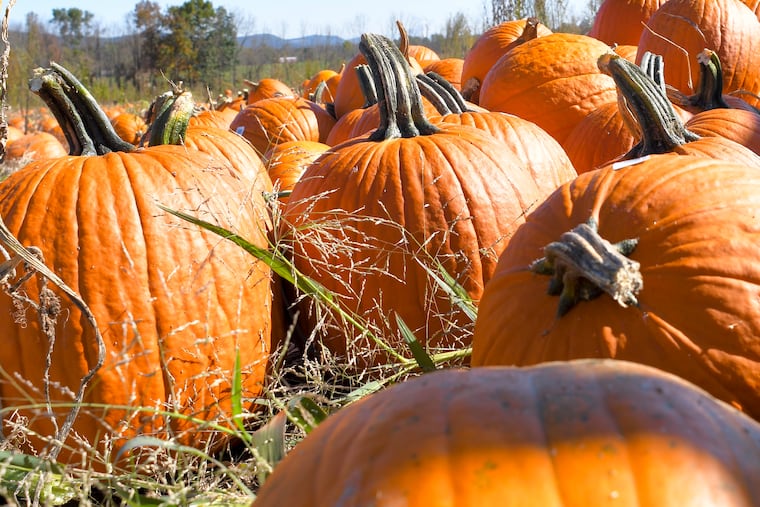‘Indian Summer’: A mystical season with a mysterious past. Does it have a future?
It's “a meteorological arrow shot from apparently nowhere, one that punctures and rips open our conception of the fall.”

The leaves are turning the color of pumpkins and apples, the sun is setting at dinnertime, and the first frost advisories of the season have been posted. In other words, summer is imminent.
“Indian Summer," that is; a mystical season loosely defined as a warm interlude following a cool spell in autumn, depending on the source consulted. But it transcends any meteorological criteria and it has defiantly eluded attempts to identify its origins — and political correction.
“We chuckle at the thought of Caucasian winter or African American spring,” mused Adam Sweeting, author of what appears to be the seminal work on the subject, Beneath the Second Sun: A Cultural History of Indian Summer.
Efforts to explore the history and evolution of the phrase date to at least the early 20th century.
So just what is ‘Indian Summer’?
The definitions vary, ranging from the first seriously warm spell of autumn after a hard freeze to any period of well-above-average temperatures from October to December.
The National Oceanic and Atmospheric Administration glossary defines it as “an unseasonably warm period near the middle of autumn, usually following a substantial period of cool weather.” And, yes, by that definition a given autumn could have more than one Indian Summer.
Sweeting, a humanities professor at Boston University, gives it a more evocative definition: “A meteorological arrow shot from apparently nowhere, one that punctures and rips open our conception of the fall.”
» READ MORE: Five fall hikes near and far from Philadelphia
Does it happen every year?
Almost assuredly at least once annually around here. Why?
The legions of warmth are constantly chasing each other around the planet, and this time of year in the Northern Hemisphere they will engage in mighty dogfights in the midlatitudes. The fallout was evident last week when a storm that mutated into a “bomb” lashed the Mid-Atlantic and Northeast with heavy rains and powerful winds.
» READ MORE: ‘Bomb’ fallout: Gusts up 50 mph gusts in Philly, higher at Shore
But between clashes those legions are likely to take turns in given regions, with a spells of cold alternating with periods of warmth. Temperatures in fall can be amazingly variable around here as the reluctantly retreating summer tries to repel the advancing winter.
As evidence, in November, the highest official temperature reading in the period of record in Philadelphia was 81; the lowest, 15.
The world average temperatures have been creeping upward — in 2018, it was about 1.4 degrees higher than it was in the 20th century, according to the National Centers for Environmental Information — but expect the great chase to continue for quite awhile and for autumn to blow alternately warm and chilly.
» READ MORE: The 6 fall drinks you need to try in Philadelphia this season
» READ MORE: It's not fall in Philly until you see these spiced wafers in the Acme aisles
Who came up with this term?
The earliest use of the word is credited to a New York farmer, Hector St. John de Crevecoeur. While he is not as famous an American chronicler as fellow Frenchman Alexis de Tocqueville, he was an astute observer and outstanding diarist.
“Sometimes the rain is followed by an interval of calm and warmth which is called the Indian Summer,” he wrote in 1778. That suggests that the term already had been in use.
Ohio historian Josiah Morrow, writing in 1911, encountered a reference to the use of “Indian Summer” around Halloween in 1798 by an Army officer involved in an expedition from Cincinnati to Fort Wayne, Ind.
But as to who said it first, Sweeting is confident that we will never know.
Why “Indian” summer?
That remains an even deeper mystery. At one point, coming up with hypotheses to explain the term became “a cottage industry,” Sweeting said.
One theory held that it was associated with the Native American hunting season. The pleasant interval lured prey to indiscreet behavior, the haziness of the air gave hunters an edge in sneaking up on their prey, and they would press that advantage further by setting prairie-grass fires.
But lexicographer Albert Matthews, whom Sweeting considers a father of Indian Summer research, pointed out in a comprehensive 1902 essay that the North American natives set such fires at other times of the year.
Other explanations include the possibility that they viewed the warming winds as a gift from gods in the desert Southwest, or that the weather became favorable for raids on the settlers.
“Possibly the first men who used the term ‘Indian Summer’ could give no good reason for their doing so,” Morrow said in his paper.
“Given the fact it has been centuries since the term first appeared,” National Weather Service historian William R. Deedler wrote in 1996, “it will probably rest with its originators.”
‘Redskins,’ ‘Braves’ have drawn protests. Why not ‘Indian Summer’
Sweeting points out that the term has never been construed as a pejorative, only as a welcome resistance to the inevitable arrival of snow, ice, and heating bills.
“I do know people have questioned the use of the term,” he said in a recent phone interview, “and that’s totally appropriate.”
But, “it is, of course, a beautiful time of year.”
» READ MORE: At Eagles game, natives and allies protest 'Redskins' name